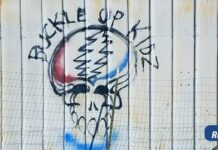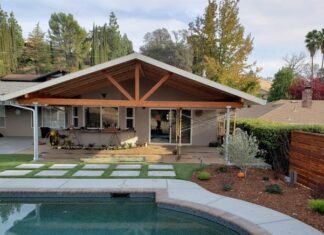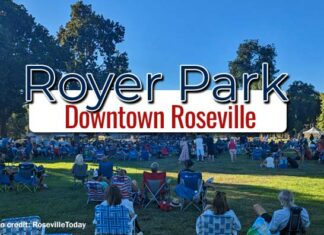Pyramid for a Tomb?
In January 1913, Joel Parker Whitney, called Parker then, died at Del Monte California after a long bout with kidney disease. He was 78.
According to Richard Miller’s Fortune Built by Gun, Parker had prepared a pyramid-shaped mausoleum for himself at his Spring Valley Ranch near Rocklin where his family entombed his remains shortly after the funeral.
The pyramid is now an often-photographed curiosity in Rocklin’s Whitney Oaks neighborhood. It is constructed of granite blocks and juts about 15 feet skyward from a 40 foot diameter enclosure of piled rocks and native-granite boulders. Nearby boulders show bedrock mortars where Nisenan women and children ground acorns into mush until the early 19th century.
The enclosure abuts a seasonal stream in a grove of oaks, but it predates the Mausoleum, probably by at least 20 years. In the mid-1880’s Parker commissioned Runnels and Stateler of San Francisco to photograph his newly constructed The Oaks mansion and other scenic areas of his ranch. The enclosure, without the pyramid, appears in a photo titled The Fort. Speculation of former Whitney Ranch area residents and Whitney family members is that Parker built the fort as a children’s play area since his three children were all younger than 10 years old then. It seems that Parker must have started thinking of the fort as a potential burial ground only after his children outgrew it.
History doesn’t record the pyramid’s maker or its construction date. However it seems, from the fort photo and Miller’s account of Parker’s demise, that stone masons built it sometime between the mid 1880’s and 1913. Parker was very sick during his last 3 years and it might have been then, as he saw the end approaching, that he ordered construction by one of Rocklin’s many granite quarrying firms.
But why did Parker want a pyramid for a mausoleum?
The late 19th century saw the advent of a belief that pyramidal forms hold special spiritual powers. The belief is called ‘Pyramidology’. A few 19th century religions integrated its tenets and by the early 20th century it was not unusual for a person, including a Christian like Parker, to believe that pyramids could restore good heath and assure reincarnation.
According to Archeologist David Chavez, who studied the Whitney pyramid in the early 1980’s, there is evidence that Parker developed an interest in Pyramidology at the 1867 Paris Exhibition. He was displaying Colorado mineral samples there, trying to entice investment in Colorado mines and real estate. Parker’s Colorado investments were the main source of his wealth. French Egyptologist Auguste Mariette had recently unearthed a unique form of pyramid at Abydos, Egypt and had a model of it on display at the Exhibition. Mariette’s Abydos pyramid features a single burial and a base with vertical sides. Chavez’ theory is that Mariette and Parker met at the exhibition and discussed Mariette’s find. This meeting might have started Parker’s interest in Pyramidology, or it might have merely reinforced believes that he acquired from his reading and his extensive travels in the eastern states and Europe.
Parker’s remains are not alone in the pyramid today, but his pyramid rests on an Abydos-like vertical-sided base.
Today the pyramid and the fort are enclosed in a one-acre iron-fenced compound at the north end of Monument Park, about 100 yards left of the 11th hole at the Whitney Oaks Golf Course. Whitney family members set aside the acre for their permanent use while they gradually sold off Spring Valley Ranch land to other ranchers and land developers during the early to mid-20th century. About a dozen of Parker’s descendants gather at the site each year in May for a reunion.
(21+ years strong)
Welcome to the brighter side!
Get in front of local customers! 24/7 (365)





















